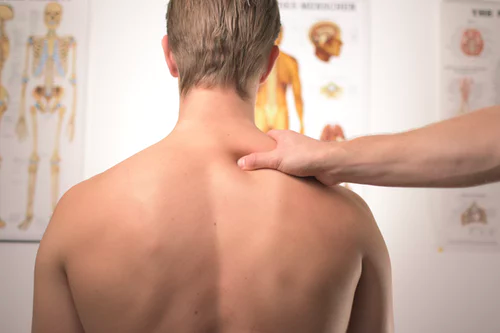Physiotherapy is a fantastic way of healing your pain. In fact, this treatment method is one of the best things you can do for yourself if you suffer from chronic ongoing pain or if you have suffered an injury. Physio works best when you commit to a series of sessions. Your therapist will help you to improve your mobility, pain symptoms and to develop long term solutions to your chronic issues. Read on for everything you need to know about treating your pain with physical therapy…
How Does Physiotherapy Treat Pain?
Physiotherapy is great because it utilises a combination of different treatment methods to target the root cause of your ongoing pain. This holistic approach means that you’re treating the effect as well as the cause, making your pain more manageable and minimising the risk of injury down the line. Your physio will work with you to help you understand the pain that you’re experiencing, giving you both long and short term solutions to heal your body and drastically improve your lifestyle. It is largely understood that there are two types of pain. These are as follows…
Acute Pain
Acute pain is short term pain. This immediate and pressing sensation alters us to an issue that is going on somewhere in our body. This can be a minor and passing feeling or it can be a signal that there is something seriously wrong going on. Acute pain is disruptive and highly treatable, your physio will use a combination of treatments to look at the where and why of your short term pain, targeting the issue.
Chronic Pain
Chronic pain is long term discomfort. This is usually categorised as a sensation that persists past the time that tissue commonly takes to heal following an injury. 3-6 months of ongoing pain will be diagnosed as chronic. The cause is largely unknown, it can be a misalignment issue, lifestyle factor or a neurological function that lies at the root of chronic pain.
Treatment Options and Methods…
Once your pain is categorised and you have had a brief lifestyle or physical analysis with your chosen professional, you will begin to undergo treatment. This can include…
Therapeutic Massage: This is fantastic for relieving tension in large muscles groups and encouraging relaxation throughout your body.
Movement Therapy and Exercises: Both in-studio and take home exercises will be utilised to strengthen muscle groups and correct your form, making your lifestyle more comfortable and manageable for you long term.
Pilates: This combination of controlled movement, strength building and flexibility is great for holistic conditioning and muscle development, which helps to support your joints and minimises the likelihood of injury down the line. You’ll learn correct form, breath and posture techniques that you can apply just about anywhere.
Dry Needling: Dry needling or acupuncture targets a specific spot of tension, pain or spasm within a muscle and releases it. This precise treatment can relax whole areas of your body or relieve pain in small sore spots.
Mindfulness, Stretching and Flexibility Exercises: Increased flexibility is important for protecting your joints, muscles and ligaments no matter what kind of lifestyle you lead or age you may be. Mindfully caring for your body every day with some simple stretching will benefit you well into your later years.
Education, Advice and Lifestyle Adjustments: Lastly, your physiotherapist will help you to treat pain, both acute and chronic, through switching up your routine and mindset. A change in lifestyle and the creation of healthier habits is going to benefit every area of your mental and physical state far down the line.
Book an appointment into a physio for pain management to improve your wellbeing today!




